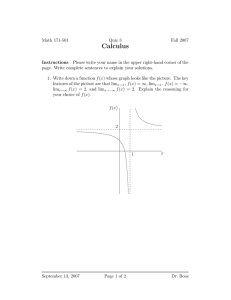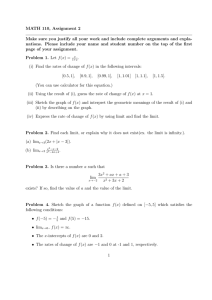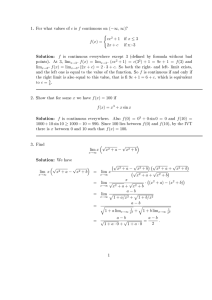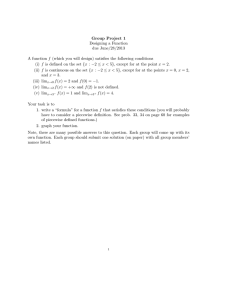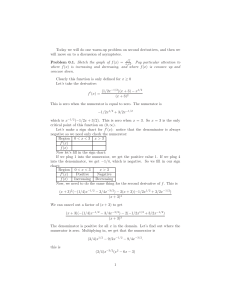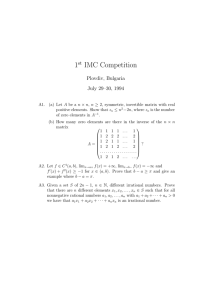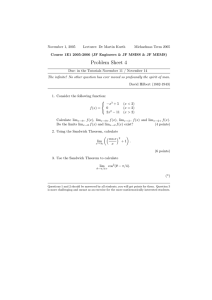Calculus
advertisement
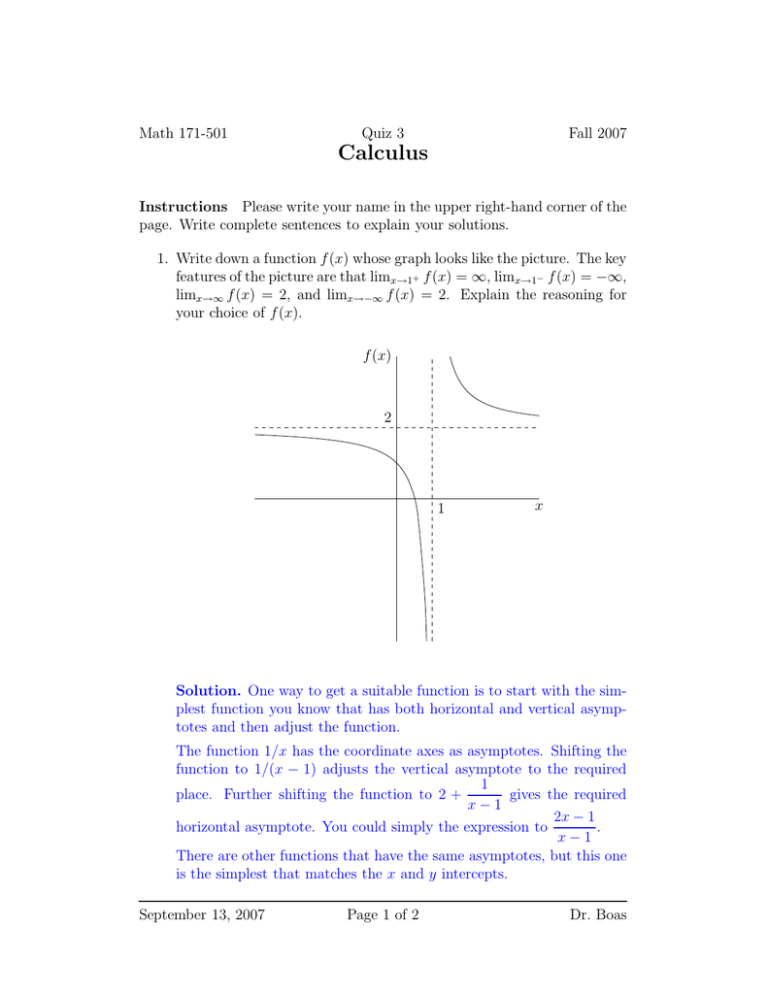
Math 171-501 Quiz 3 Fall 2007 Calculus Instructions Please write your name in the upper right-hand corner of the page. Write complete sentences to explain your solutions. 1. Write down a function f (x) whose graph looks like the picture. The key features of the picture are that limx→1+ f (x) = ∞, limx→1− f (x) = −∞, limx→∞ f (x) = 2, and limx→−∞ f (x) = 2. Explain the reasoning for your choice of f (x). f (x) 2 1 x Solution. One way to get a suitable function is to start with the simplest function you know that has both horizontal and vertical asymptotes and then adjust the function. The function 1/x has the coordinate axes as asymptotes. Shifting the function to 1/(x − 1) adjusts the vertical asymptote to the required 1 place. Further shifting the function to 2 + gives the required x−1 2x − 1 . horizontal asymptote. You could simply the expression to x−1 There are other functions that have the same asymptotes, but this one is the simplest that matches the x and y intercepts. September 13, 2007 Page 1 of 2 Dr. Boas Math 171-501 Quiz 3 Fall 2007 Calculus 1 2 1 = . Supply a − 2 2. The TI-89 calculator says that lim x→1 x − 1 x −1 2 computation that confirms this value. (Suggestion: combine the fractions with a common denominator and simplify.) Solution. When x = 6 1, we can simplify the expression algebraically as follows: 2 x−1 1 1 − 2 = 2 = . x−1 x −1 x −1 x+1 The expression on the right-hand side is a rational function whose denominator is not equal to 0 when x = 1, so the function is continuous at x = 1. Therefore we can correctly obtain the limit by substituting in the value of x: namely, 1 2 1 1 lim = lim − 2 = . x→1 x→1 x + 1 x−1 x −1 2 3. Find a number c such that lim x→∞ √ x2 + cx − x = 3. Solution. We make some algebraic manipulations to convert the expression into a more manageable form. Multiplying and dividing by √ 2 x + cx + x gives the equivalent expression x2 + cx − x2 c √ . =p 2 1 + xc + 1 x + cx + x Now limx→∞ xc = 0, so the limit of the whole expression is equal to √ c or c/2. In order for this result to equal 3, we must have c = 6. 1+0+1 September 13, 2007 Page 2 of 2 Dr. Boas


